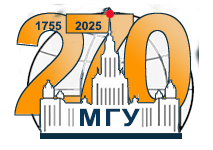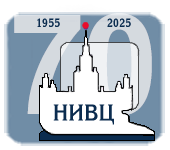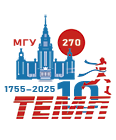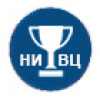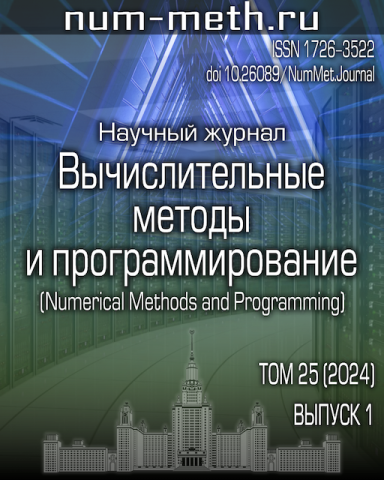- 09 November 2020
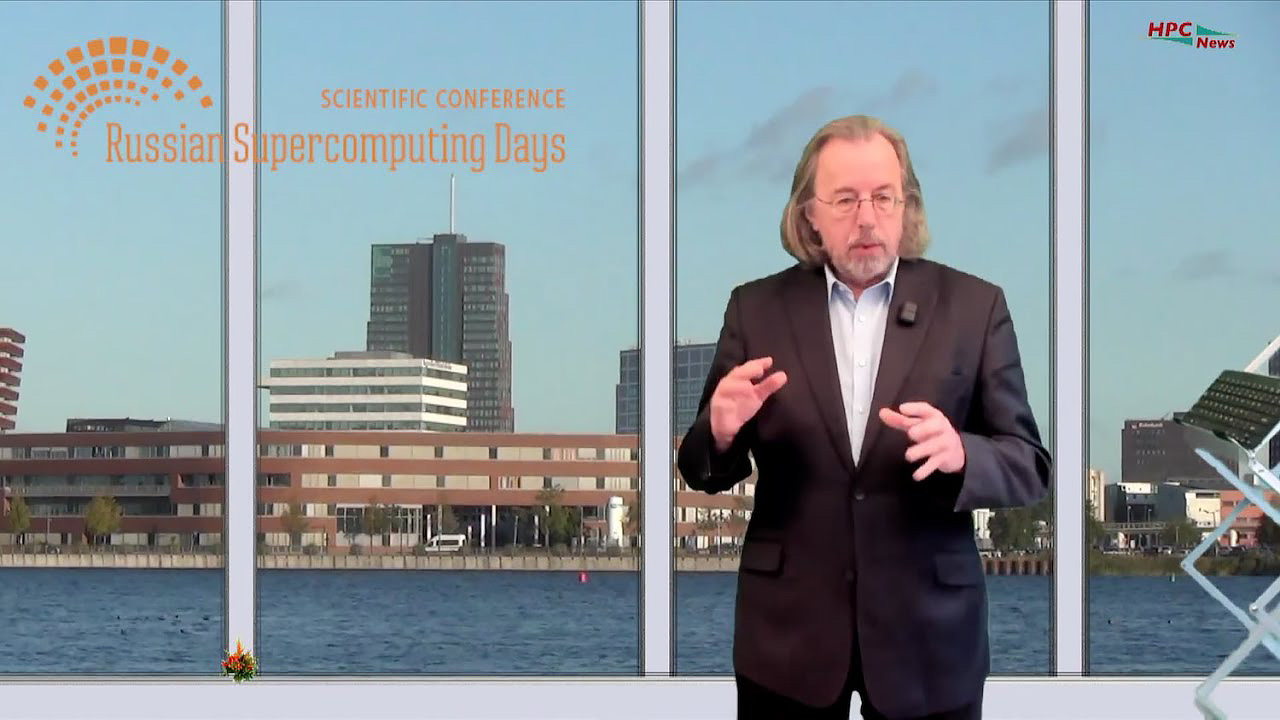
12 октября 2020 года Almere-из своего виртуального 4m ниже sealevel studioPrimeur Magazineрепортаж с российских суперкомпьютерных дней, которые физически не состоялись в Москве в этом году, но практически прошли онлайн 21-22 сентября 2020 года. Второй день сессии освещается в этом видео с основными ключевыми моментами о будущем HPC. Заседание проходило под председательством Владимира Воеводина. Он представил трех ораторов. Первым был Томас Липперт из суперкомпьютерного центра Юлиха, который рассказывал о европейских разработках и главным образом о ПРАСЕ. Вторым был Матео Валеро из Барселонского суперкомпьютерного центра (BSC), который рассказал о деятельности BSC в области высокопроизводительных вычислений. Третьим был Джек Донгарра, который поделился некоторыми соображениями о недавнем выпуске TOP500.
Российские суперкомпьютерные дни - пленарное заседание 2-го дня с участием Джека Донгарры, Томаса Липперта и Матео Валеро
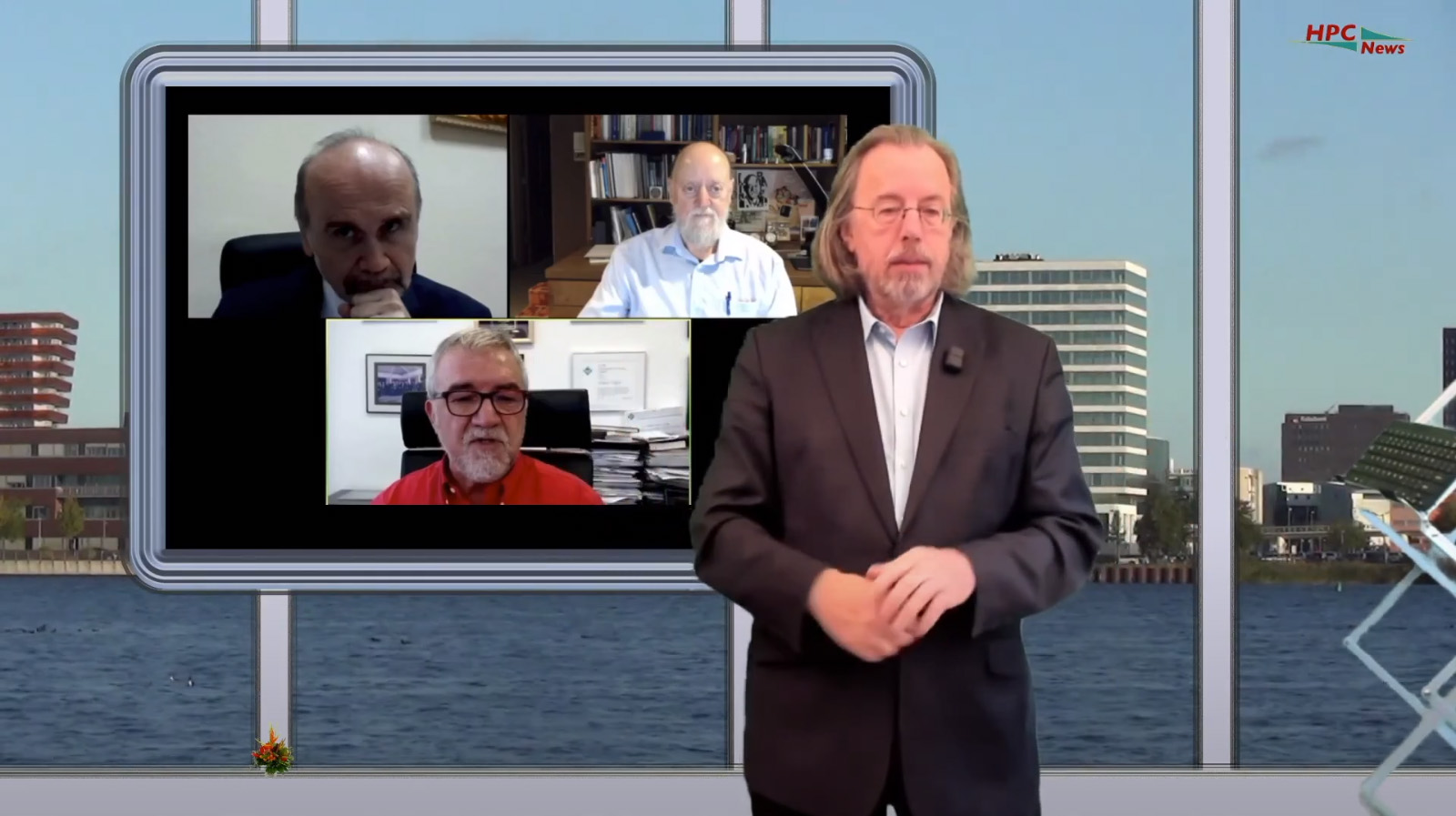
Под председательством В.В. Воеводина, будущее высокопроизводительных вычислений обсуждалось с Джеком Донгарра, Томасом Липпертом, и Матео Валеро на российских суперкомпьютерных днях.
12 Oct 2020 Almere - From its virtual 4m below sealevel studioPrimeur Magazinereported from the Russian Supercomputing Days that did not take place physically in Moscow this year but were virtually held online on September 21-22, 2020. The second day session is highlighted in this video with the main keynotes about the future of HPC. This session was chaired by Vladimir Voevodin. He introduced three speakers. The first one was Thomas Lippert from the Jülich Supercomputing Center who talked about the European developments and mainly PRACE. The second one was Mateo Valero from the Barcelona Supercomputing Center (BSC) who talked about BSC's activities in high performance computing. The third one was Jack Dongarra, who shared some insights about the recent edition of the TOP500.
Thomas Lippert focused on PRACE, an organisation that is taking care of distributing computing time from European supercomputers to European researchers. Most countries in Europe are already member with the small exception of the Baltic states. The computers that are distributing time are the national tier-1 systems in a few big countries. There is also EuroHPC which will install tier-0 systems. Those machines will not become available until early next year. Thomas Lippert mentioned some PRACE achievements such as the large number of scientific projects enabled, the number of 110 of peak performance petaflops that PRACE has now on 7 machines. Until now, some 12.000 people have been trained during the past years.
Thomas Lippert then turned his attention to the systems that they have at the Jülich Supercomputing Center. There are a lot of developments. They started with one monolithic machine but currently Jülich has several modules or sub-clusters that are being connected. Thomas Lippert is an advocate of modular computing. One can have modules for standard clusters and multi-tier clusters, as well as modules for neuromorphic computing. These are connected by a modular interconnect. This allows to use several of the modules for a specific application. Depending on the application you take different modules and connect them together. The JUWELS modular system is a 12 petaflops system. The JUWELS booster is more specialized system with GPUs. The booster has a peak performance of 73 petaflops. Tying the modules together allows for flexibility. Thomas Lippert told that they expect an exascale system at Jülich by the end of 2023 or perhaps in 2024.
Mateo Valero is an advocate of open hardware. He started out by telling that the Barcelona Supercomputing Center is hosting up to 722 people already and is still growing fast. Actually, it is hard to find a European HPC project that does not involve BSC. Currently, their working horse is the MareNostrum 4. This is not one monolithic machine. It consists of several sub-clusters for different kinds of applications. Mateo Valerlo told that with the money BSC was granted for the MareNostrum 4 they could have made it to the first or second rank in the TOP500 but at BSC they preferred to have a globally usable machine.
Open hardware is still a problem in Europe. If one looks at the European open system stack, you start from TRL 1-2 machines that are experimental and end with TRL 8-9 machines that are mature and can be used in production. Most of the open system stack is already in production, according to Mateo Valero's overview, except for memory, storage and interconnect. The CPUs however are still at TRL 1-2 level or at the research level. What Mateo Valero is advocating now is to use RISC-V. RISC-V is the best and the worst choice at the same time. In fact, there is no choice if you want to go open with an architecture that is already widely used relatively.
Europe definitely needs its own processor, according to Mateo Valero. Processors are everywhere now. They control each and every aspect of our lives. For security, there could be back doors that are present in processors of which you don't know anything if you do not design them yourself. There is also the danger of future restrictions on exports. For example, the US administration forbids everything in processors going to China. This means that even a chip manufacturing machine cannot be delivered to China. In addition, a competitive European supply chain for HPC will create jobs.
In the accelerator and CPU landscape, one is working on RISC-V CPUs and accelerators. A new project just has started, called the e-Processor. e-Processor is the basic RISC-V processor. BSC is involved in the European Processor Initiative that consists of two phases. BSC also has submitted a proposal for a European PILOT system using this kind of architectures. Starting from the European Processor Initiative and going to MEEP and the e-Processor, this is the roadmap to get to exascale based on European technology. The first phase of the European Processor Initiative already started a few years ago. In this project there will be a RISC-V based accelerator and a vector core. There will be participation from several countries that bring their own technologies and ideas, discussing and working together.
BSC will have one of the three planned pre-exascale systems, the MareNostrum 5. The other ones will be hosted in Italy and Finland. BSC also has an experimental exascale platform called MEEP. This is an FPGA engine to emulate hardware architectures that BSC wants to have later on implemented in the real processors. The MareNostrum 5 should be online somewhere early next year, in 2021. It will be the same architecture as the MareNostrum 4 with different smaller systems which, connected together, deliver the whole MareNostrum 5. As good as this may work for applications, it is difficult with this type of machine to reach the top. BSC did not want to reach the top position with MareNostrum 4 because one wanted to emphasize on the applications. The same policy is planned with the MareNostrum 5, which makes it very difficult with that amount of money to reach the top 5. However, the goal of the European Commission was to place, by means of the EuroHPC endeavour and the pre-exascale systems, three systems in the top 5.
The e-Processor project will deliver a general purpose processor that can be used for HPC, for Artificial Intelligence (AI) and bio-informatics, consisting of 64-bit and 16-bit mixed precision, based on RISC-V. The next phase of EuroHPC will be to have some pilots. These are large systems which integrate European hardware already to demonstrate that you could reach exascale if you would scale up such a pilot. This proposal has just been submitted. Reaching exascale with this European technology will still take some time. There will be a flagship accelerator programme based on RISC-V that should be part of the next Framework Programme and should somewhere around 2026, or perhaps even later, deliver results. So, a European exascale system based on RISC-V technology will be a reality in 2026 or even later, according to Mateo Valero.
The third speaker, Jack Dongarra, highlighted the Fugaku system and mentioned that there were quite a few new systems in the top 10. However, there is a record low in turn-over in the TOP500. There were only 51 systems that dropped off the June 2020 TOP500 list. Normally, there are many more. This shows that there were not many investments made. Most of the investments were already made last year so this has nothing to do with COVID-19. This means that people do not invest in high performance systems that often anymore.
Jack Dongarra claimed that there is a difference between the top 100 and the rest of the 400 systems that make up the TOP500 list. The top 100 consists of research systems in which there is a lot of development going on. Once in a while this is shown in the top 10 results. These machines are completely different from the other 400 systems which are situated in the lower parts of the TOP500. These 400 machines are not even used for high performance computing but for large data centre type of applications. If Jack Dongarra had his way he would have started from scratch and created, together with his colleagues, a TOP100 with a focus on real high performance computing.
Jack Dongarra showed in the TOP500 development that one is close to exascale but not yet there. He also mentioned the two Russian supercomputers that are figuring in the TOP500. Jack Dongarra likes to benchmark machines and get into the nitty-gritty of reasons why systems are performing well. Therefore, he uses an alternative to the TOP500 which are the HPCG results. This is a different kind of benchmark which captures the modern type of applications.
Primeur magazineis published by:
Genias Benelux bv
James Stewartstraat 248
NL-1325 JN Almere
tel: + 31 36 5373867
e-mail: editor@primeurmagazine.com
Будущее европейских HPC и TOP500 в кадре на российских суперкомпьютерных днях
News
Заседание Ученого совета НИВЦ МГУ, 15 января 2026 г.30 December 2025 15:11А.В. Дебольскому присуждена степень кандидата физико-математических наук24 December 2025 16:26Торжественное заседание Ученого совета НИВЦ МГУ, 25 декабря 2025 г.21 December 2025 13:32RCC journal
Contacts
119991, Russian Federation, Moscow, GSP-1, Leninskie Gory, 1 , p. 4, RCC MSU
+7 495 939-5424,
Details
Recently added
Заседание Ученого совета НИВЦ МГУ, 15 января 2026 г.30 December 2025Торжественное заседание Ученого совета НИВЦ МГУ, 25 декабря 2025 г.21 December 2025
Content of the RCC MSU website is licensed under:
